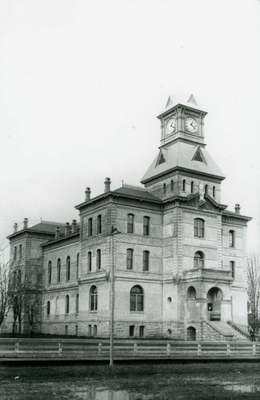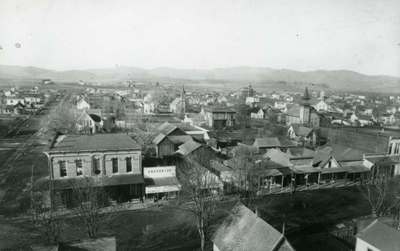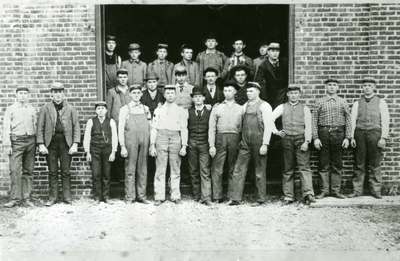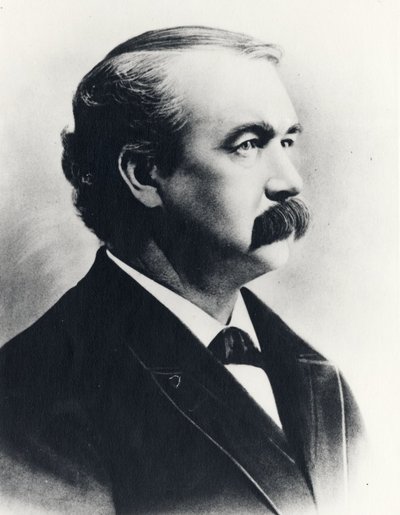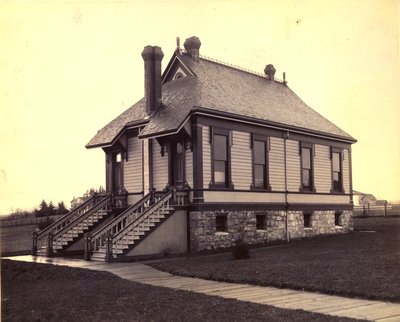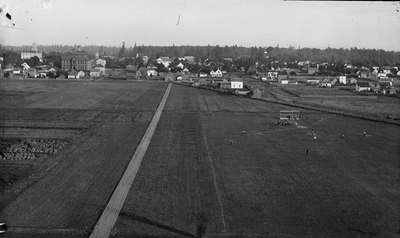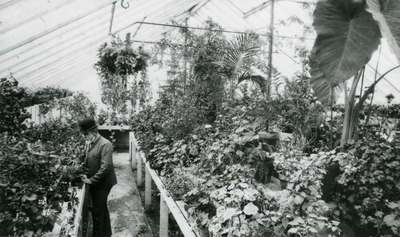1890-1894
1890
Second Morrill Act passed by Congress on August 30. The Act granted funds to those states with land grant colleges. The act placed $15,000 at the disposal of the Board of Regents for the year ending July 1890. No part of the funds could be used for buildings.
The college became a national leader in gender equality by being one of three land grant institutions in the nation to offer scientific courses to women.
The Library of the Adelphian, a student literary club that later became the nucleus of the campus library, presented to the College.
First full-time librarian position established: May Warren, 1890-1891.
Brass band organized in November; students had to procure their own instruments.
Faculty passed a resolution that no students would be allowed to smoke in the buildings or on the college grounds.
Name of institution – Oregon Agricultural College (OAC).
Enrollment: 152 at all levels; 85 at college level.
Population in Corvallis: 1,527; in Benton County: 8,650; in Oregon: 317,704.
1891
College and Experiment Station printing plant established and operational. It had been approved on September 24, 1890; Second Morrill Act funds used to purchase the equipment.
Faculty totaled twelve members.
Cadet band established.
1892
Upon the death of President Arnold on January 30, Professor John Davidson Letcher, B.S., (Professor of Mathematics and Engineering, 1888-1894), the senior faculty member, was appointed by the Board of Regents as acting president (February 17, 1892-May 31, 1892) pending the appointment of a new president. After the arrival of the new President, John Bloss, in May 1892 Letcher resumed duties as Professor of Mathematics and Engineering. He left OAC in 1894 to teach mathematics at the University of Oregon (1894-1896) and later settled in his native Virginia.
John McKnight Bloss, A.B., A.M., M.D., (June 1, 1892-June 24, 1896) appointed as the third president of the State Agricultural College of the State of Oregon. Bloss was the first president hired directly by the Board of Regents. Prior to his arrival in Oregon, Bloss had served for 20 years as the superintendent of public schools in Indiana and Kansas. Bloss resigned in June 1896 due to failing health and returned to his home state of Indiana.
After President Arnold's death, President Bloss relaxed student discipline for the first time and students of the opposite sex were allowed to work and study together.
Construction of the Station Building (later the Paleontology Laboratory and now the Women's Center) and Cauthorn Hall (now Fairbanks Hall) completed.
Y.M.C.A. established.
Extra-curricular activities and athletics organized, including the establishment of the College Athletic Club.
Lawsuit, Methodist Episcopal Church, South, vs. State of Oregon, settled in favor of the State of Oregon.
System of electric bells installed – manually operated by the janitor.
1893
Orange selected as the school color on May 2. The students immediately adopted black as a background for their color. This selection gave rise to controversy because Albany College had selected orange and black for its colors in 1887. (Notes: (1) In addition to orange, black has been used by tradition but was never officially adopted as the second university color. (2) The first school color was blue – date unknown).
"Orangemen" and "Aggies" used as nicknames.
Athletic program, including football, established.
First inter-collegiate outdoor and indoor athletic contest held May 4 in Brownsville.
The first football team was organized with Will H. Bloss, son of President John M. Bloss, as coach. On November 11, in its first game, the college defeated Albany College 62-0 in front of an estimated 500 fans. Will Bloss is credited with introducing football to the State of Oregon.
Horticulture Building (later Poultry Feeding Building) completed. It included a photography studio on the second floor.
The first mascot was a coyote named Jimmie.
In its 25th year after designation as a state college: collegiate enrollment--184 (179 undergraduates and 5 graduates); degrees granted--19; teaching and research staff--16; library collection--1,950 volumes.
Oregon Legislative Assembly appropriated $26,100 for new buildings.
1894
Farmer's Short Course, first in the West, offered from January 10 to February 7, 1894.
"Hayseed", forerunner of the Beaver yearbook, published by a group from the junior class; the first yearbook published in Oregon.
On December 1, the Board of Regents voted to limit students admitted to the Preparatory Department to those who came from towns of less than 2,000; the first action taken in establishing entrance standards.
Mechanical Hall expanded.

